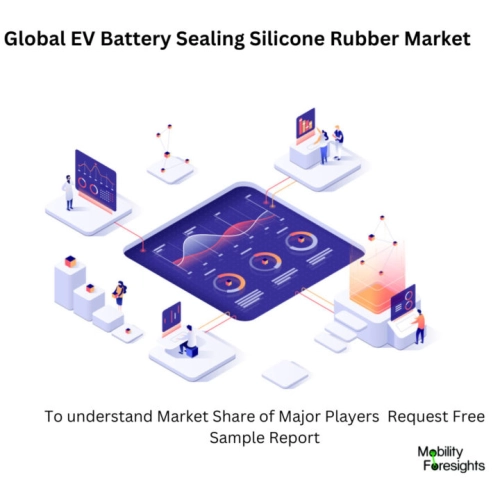
- Get in Touch with Us

Last Updated: Apr 25, 2025 | Study Period: 2023-2030
EV battery sealing silicone rubber is a type of material that is used to seal the battery housings of electric vehicles. It protects the batteries from vibrations, thermal shock, moisture, dust, and corrosion, helping extend battery life. It also provides electrical insulation and thermal management for the battery cells.
Some of the benefits of using EV battery sealing silicone rubber are:

The Global EV battery sealing silicone rubber market accounted for $XX Billion in 2022 and is anticipated to reach $XX Billion by 2030, registering a CAGR of XX% from 2023 to 2030.
DOWSIL⢠EA-4700 CV Adhesive is a two-part, room temperature cure adhesive that enables assembly production savings due to a fast cure at room temperature. It is used for electronics control units, sensors modules, or battery pack applications where lid seal, base plate attaching, gasketing or connector sealing is required and where reliable adhesion is necessar.It offers the following benefits:
Specialty Silicone Products (SSP), which makes EMI silicones for EV battery box sealing with electrically conductive nickel-graphite particles.
Henkel Adhesives, which offers customized and fully automatic material/machine system solutions for securely sealing EV battery housings with polyurethane or silicone sealing foams.
Canada Rubber Group (CRG), which manufactures EV battery pack seals from a range of materials, including kSil⢠V-O silicone sponge that protects EV battery packs from environmental elements.
Dow, which provides DOWSIL⢠EA-4700 CV adhesive for EV battery pack assembly and sealing with high thermal conductivityand low volatile organic compound (VOC) emissions.
Wacker Chemie AG, which supplies ELASTOSIL® silicone rubber grades for EV battery sealing applications that offer high temperature stability, low compression set, and good adhesion to various substrates.
Momentive Performance Materials, which develops SilCool⢠thermally conductive silicone adhesives for EV battery pack sealing and bonding that enhance heat dissipation and reliability
| Sl no | Topic |
| 1 | Market Segmentation |
| 2 | Scope of the report |
| 3 | Abbreviations |
| 4 | Research Methodology |
| 5 | Executive Summary |
| 6 | Introduction |
| 7 | Insights from Industry stakeholders |
| 8 | Cost breakdown of Product by sub-components and average profit margin |
| 9 | Disruptive innovation in the Industry |
| 10 | Technology trends in the Industry |
| 11 | Consumer trends in the industry |
| 12 | Recent Production Milestones |
| 13 | Component Manufacturing in US, EU and China |
| 14 | COVID-19 impact on overall market |
| 15 | COVID-19 impact on Production of components |
| 16 | COVID-19 impact on Point of sale |
| 17 | Market Segmentation, Dynamics and Forecast by Geography, 2023-2030 |
| 18 | Market Segmentation, Dynamics and Forecast by Product Type, 2023-2030 |
| 19 | Market Segmentation, Dynamics and Forecast by Application, 2023-2030 |
| 20 | Market Segmentation, Dynamics and Forecast by End use, 2023-2030 |
| 21 | Product installation rate by OEM, 2023 |
| 22 | Incline/Decline in Average B-2-B selling price in past 5 years |
| 23 | Competition from substitute products |
| 24 | Gross margin and average profitability of suppliers |
| 25 | New product development in past 12 months |
| 26 | M&A in past 12 months |
| 27 | Growth strategy of leading players |
| 28 | Market share of vendors, 2023 |
| 29 | Company Profiles |
| 30 | Unmet needs and opportunity for new suppliers |
| 31 | Conclusion |
| 32 | Appendix |